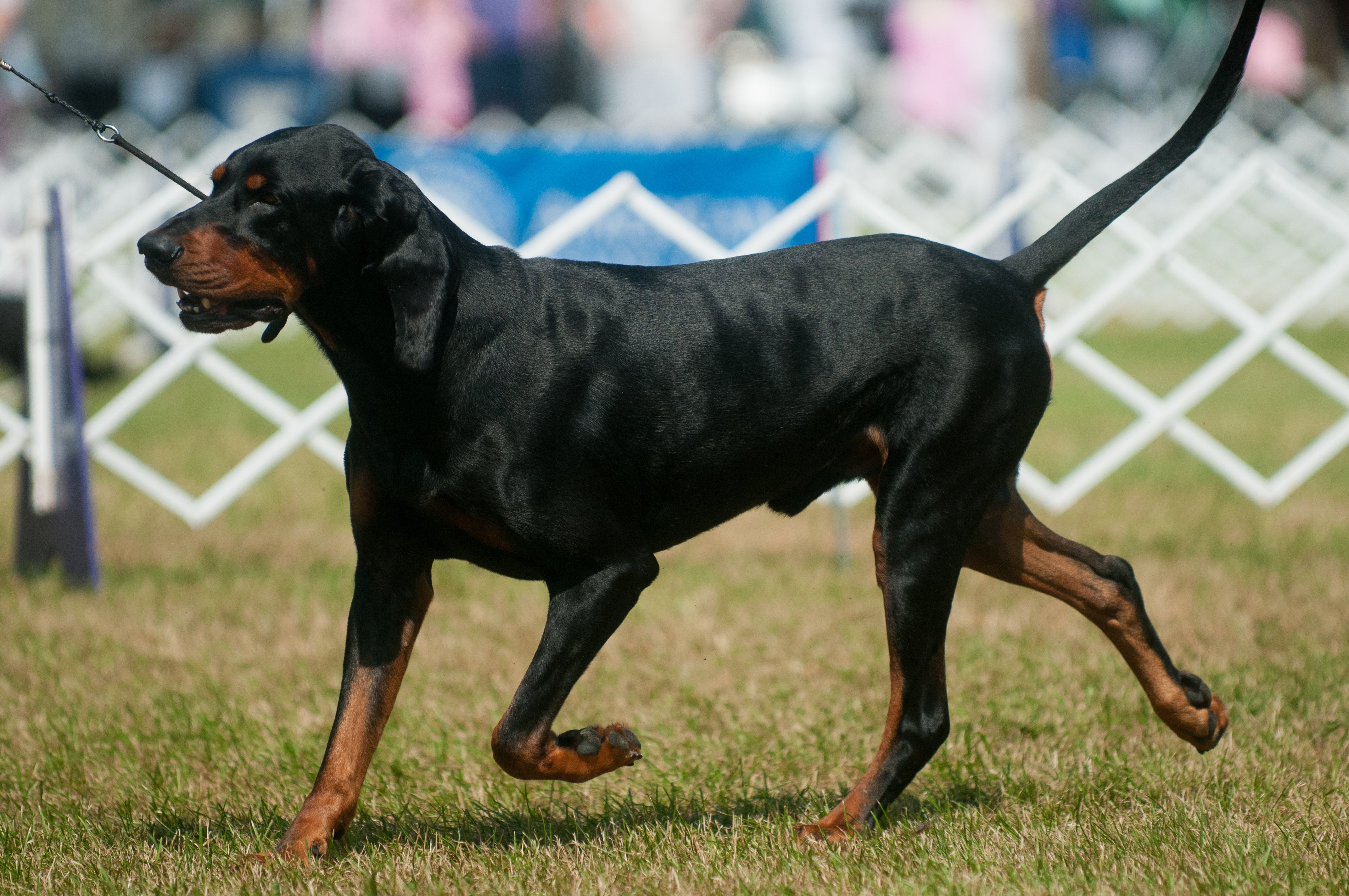Black and Tan Coonhound
With long ears designed for stirring up ground scents and a deep muzzle, the Black and Tan Coonhound is a medium-sized dog built for strength and speed. They have a short weatherproof coat and an alert and inquisitive face. The tail is held high. The Black and Tan Coonhound is an alert dog with a deep bark.
Breed characteristics carousel
Learn More
Need to Know
- Dog suitable for owners with some experience
- Extra training required
- Generally healthy breed
- Enjoys vigorous walks
- Large dog
- Some drool
- Requires frequent grooming
- Chatty and vocal dog
- Barks and alerts to visitors/anything unusual
- Generally friendly with other dogs
- May need additional training to live with other pets
- Great family dog
- Needs a large yard, preferably in rural areas
- Can be left alone occasionally with training
- AKC Registered Breed

Personality
Easygoing and affable, the Black and Tan Coonhound is calm indoors. Outside, though, once on a scent, these pups can become strong-willed and stubborn as they chase it down. They are gentle and tolerant with children, although perhaps a little too independent and serious to be playful with a child. Reserved with strangers, they bay and howl to alert in a deep voice.
The Black and Tan Coonhound dog breed originated in America, likely as a cross between the Bloodhound and the Virginia Foxhound, which has black and tan markings. They are originally from the Appalachian and Smokey Mountains area, where they were used to hunt over difficult landscapes. With their noses to the ground, the Black and Tan Coonhound picks up on scents, often at night, howling and baying in a deep, recognizable tone.
Ideal Black and Tan Coonhound dog owners will enjoy walking, preferably in rural areas as this dog was bred to be in the countryside. They like to make their opinions known, so close neighbors in suburban or city settings might not enjoy that. Owners should be active.
Give the Black and Tan Coonhound a variety of walks over lots of different terrain and they will be happy. They love running free off-leash, scent work, and getting a job done. Black and Tan Coonhound dogs have stamina for days and they might seem like they have endless energy to keep going—because they do. Mental exercise should be part of the dog’s routine, including tracking and scent work.
Definitively rural dogs, the Black and Tan Coonhound does best in a country setting with a large, fenced-in yard. Give them lots of long walks so they can show off their stamina and impressive nose.
Wipe the Black and Tan Coonhound clean with a stiff bristle brush or hound mitt to shine up their coats a few times a week and the dogs will be kept in tip-top shape. Their lip folds and ears need to be checked for debris, as do their paw pads.
Stamina is the name of the game with the Black and Tan Coonhound, and that applies to training as well as exercise. They are clever but can be slow to mature. Intense and repetitive training can make them unmotivated. Quick sessions throughout the day work best, especially if they involve some sort of work. They are highly motivated by food. Early socialization for Black and Tan Coonhound puppies and dogs is important.
Active families in rural areas who don’t mind a bit of howling will love a Black and Tan Coonhound. They are tolerant of children but aren’t as engaging as other breeds, so they do best with older children or homes with no children. Owners should be home most of the day as they are prone to separation anxiety—and don’t mind who hears them wailing about being left alone. Black and Tan Coonhound puppies can be clumsy.
The cost of a Black and Tan Coonhound from a breeder is significantly more than the cost of adopting one from a local shelter or rescue. The adoption fee usually covers additional items such as spaying or neutering, vaccines, and microchipping

Learn more about feeding and caring for your Black and Tan Coonhound on Purina.
Did You Know?
- George Washington was key in developing the Black and Tan Coonhound dog breed. Thomas Jefferson even owned several of the dogs.
- A Black and Tan Coonhound dog named Copper in Cocoa Beach, Florida worked as a therapy dog, police dog, and courtroom dog.
